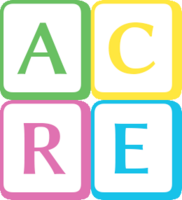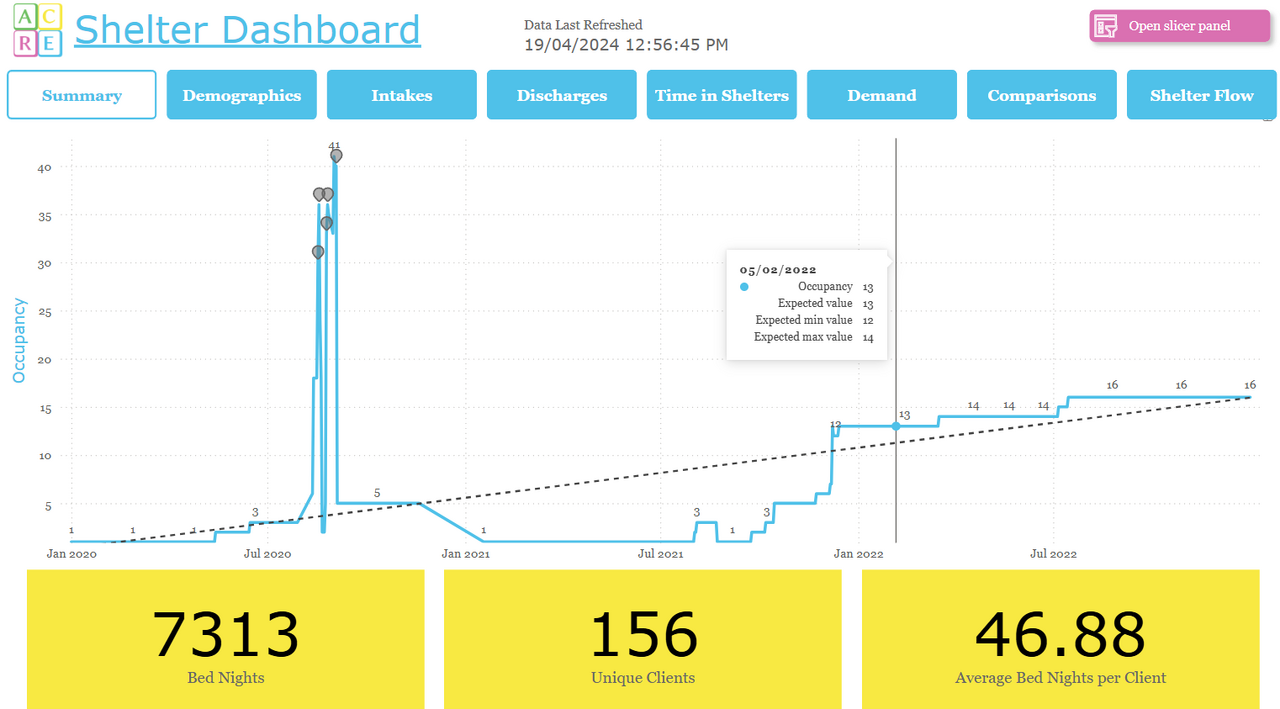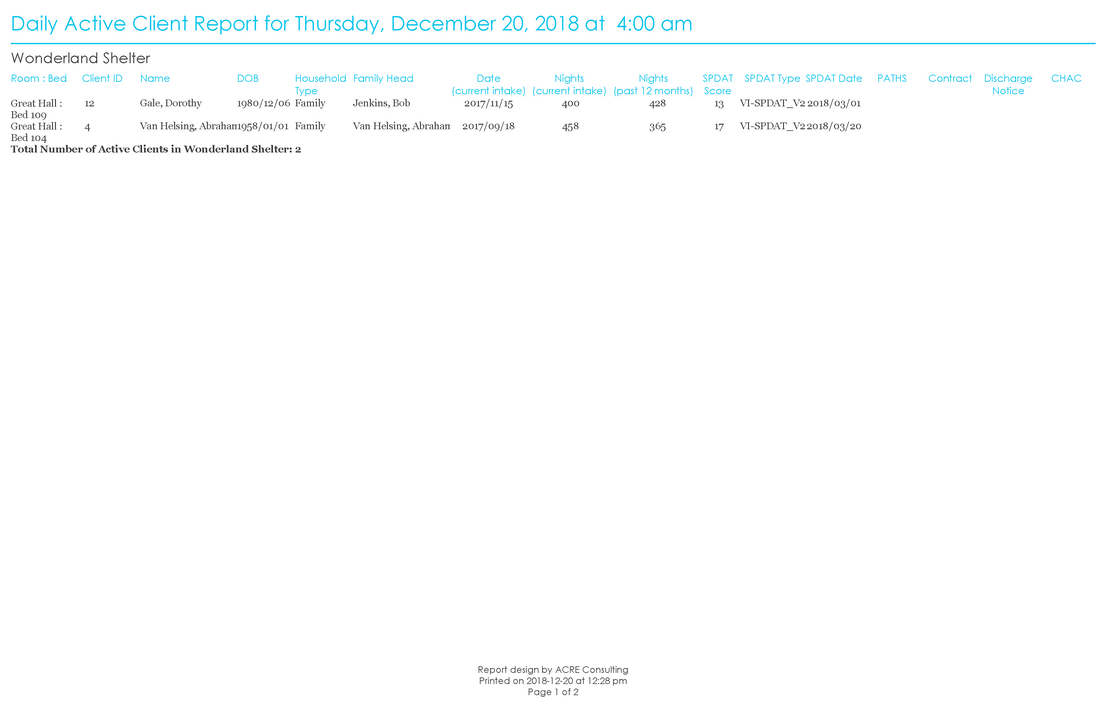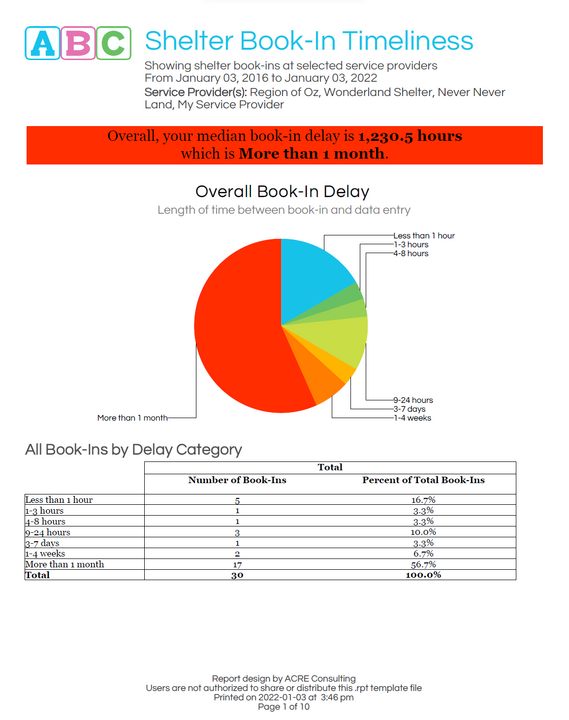
This report contains everything a community or service provider needs to conduct a data quality timeliness audit for their shelter book-ins. It measures the gap between actual book-in time and data entry time.
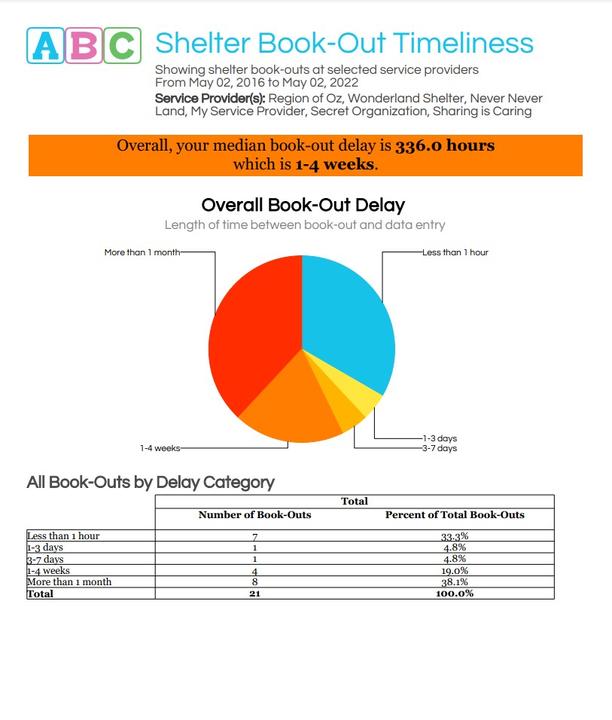
This report contains everything a community or service provider needs to conduct a data quality timeliness audit for their shelter book-outs. It measures the gap between actual book-out time and data entry time.
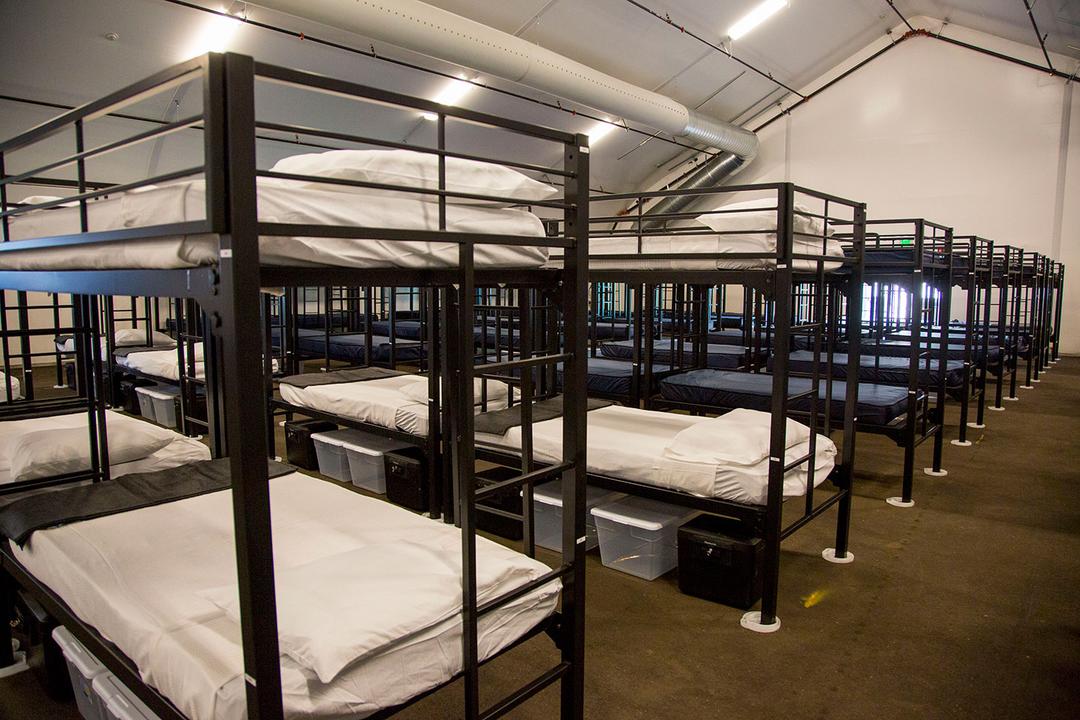
Shelter worker? Get HIFIS training! This training covers: logging in and accessing HIFIS; adding clients, consent, families, and other client information; shelter operations; providing goods, services, and group activities; the VI-SPDAT assessment; incidents, turnaways, and service restrictions; and running reports.
Total learning time is about 4 hours.
Note that this is generic training for an average shelter worker; your shelter may do things somewhat differently.
Shelter worker? Get HIFIS training! This training covers: logging in and accessing HIFIS; adding clients, consent, families, and other client information; shelter operations; providing goods, services…

Shelter supervisor? Get HIFIS training! This training covers: logging in and accessing HIFIS; adding clients, consent, families, and other client information; shelter operations; providing goods, services, and group activities; the VI-SPDAT assessment; incidents, turnaways, and service restrictions; running reports; managing shelter beds; managing user accounts; auditing and other administrative tasks; and coordinated access.
Total learning time is about 5.5 hours.
Note that this is generic training for an average shelter supervisor; your shelter may do things somewhat differently.
Shelter supervisor? Get HIFIS training! This training covers: logging in and accessing HIFIS; adding clients, consent, families, and other client information; shelter operations; providing goods, serv…
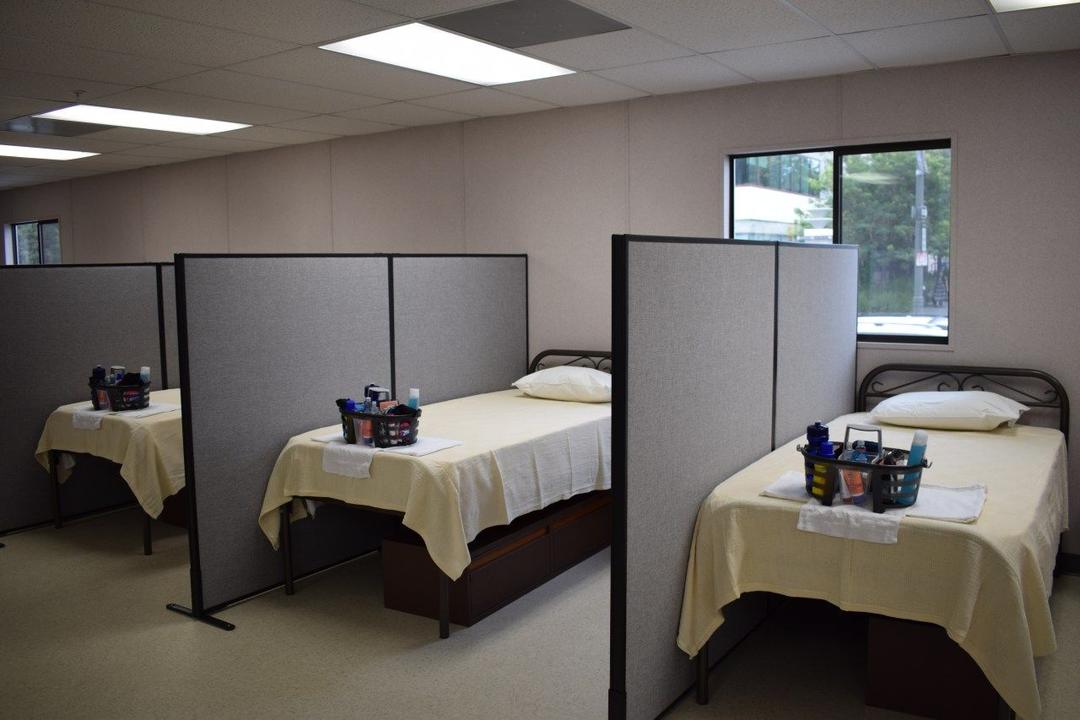
Case manager in a shelter? Get HIFIS training! This training covers: logging in and accessing HIFIS; adding clients, consent, families, and other client information; shelter operations; case management; providing goods, services, and group activities; the VI-SPDAT assessment; incidents, turnaways, and service restrictions; and running reports.
Total learning time is about 4.5 hours.
Note that this is generic training for an average shelter-based case manager; your shelter may do things somewhat differently.
Case manager in a shelter? Get HIFIS training! This training covers: logging in and accessing HIFIS; adding clients, consent, families, and other client information; shelter operations; case managemen…
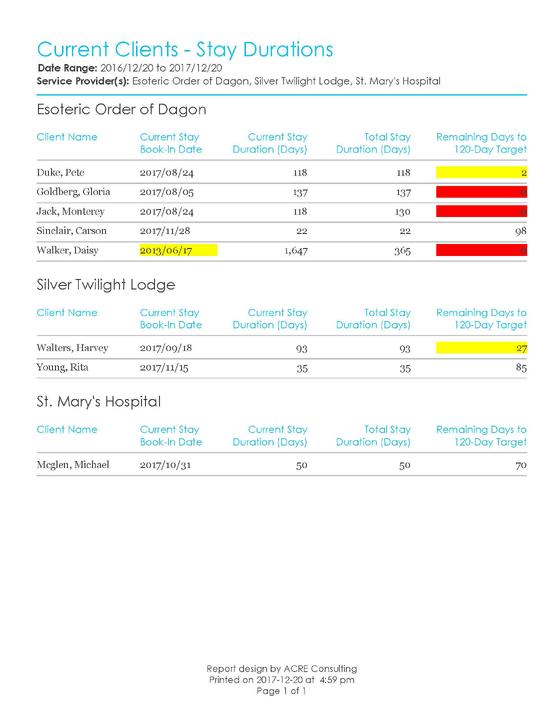
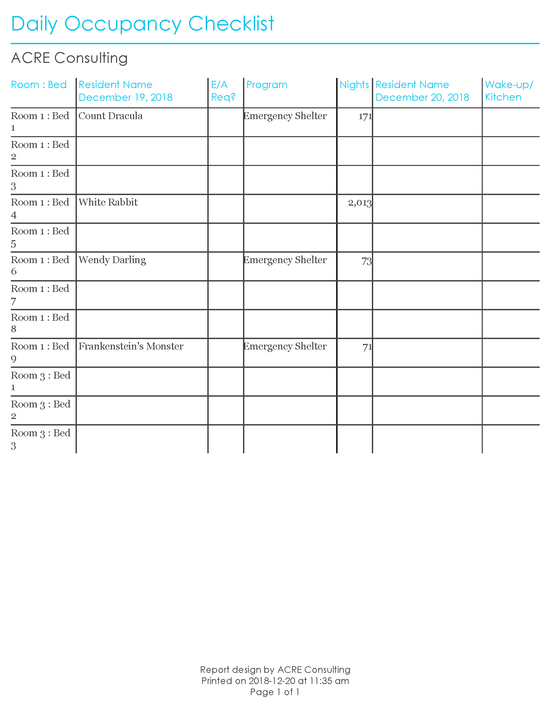
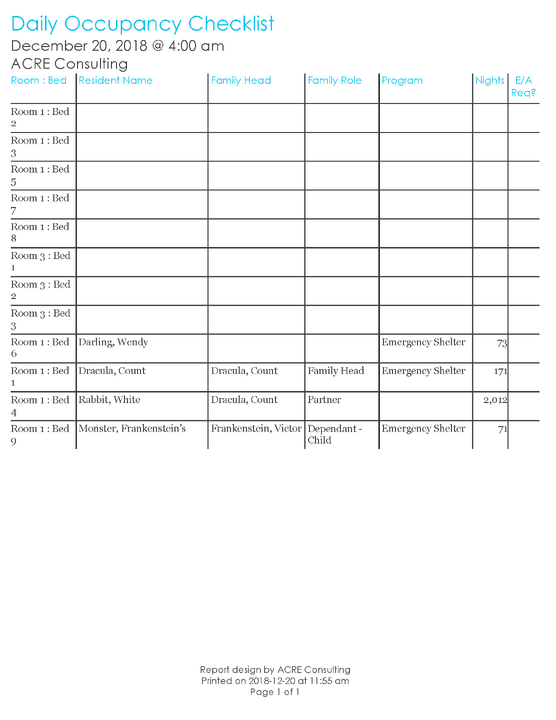
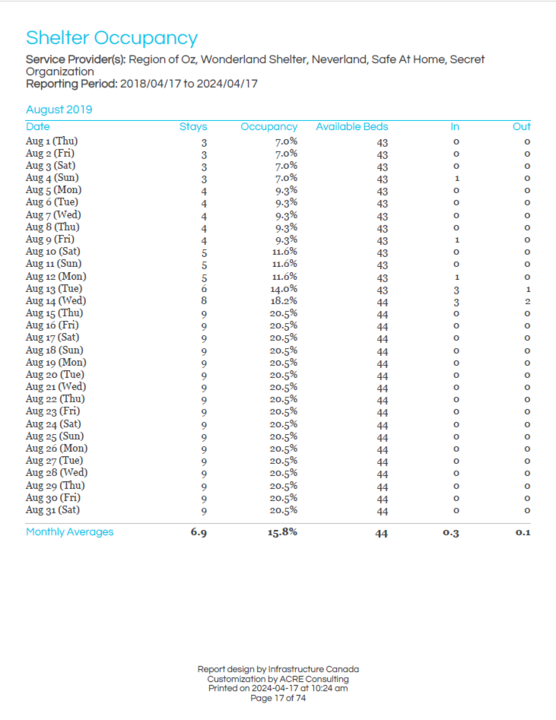
This report shows, for each day in the report range, the number of book ins and book outs and stays.
Note: this is a fixed version of the official HIFIS report.
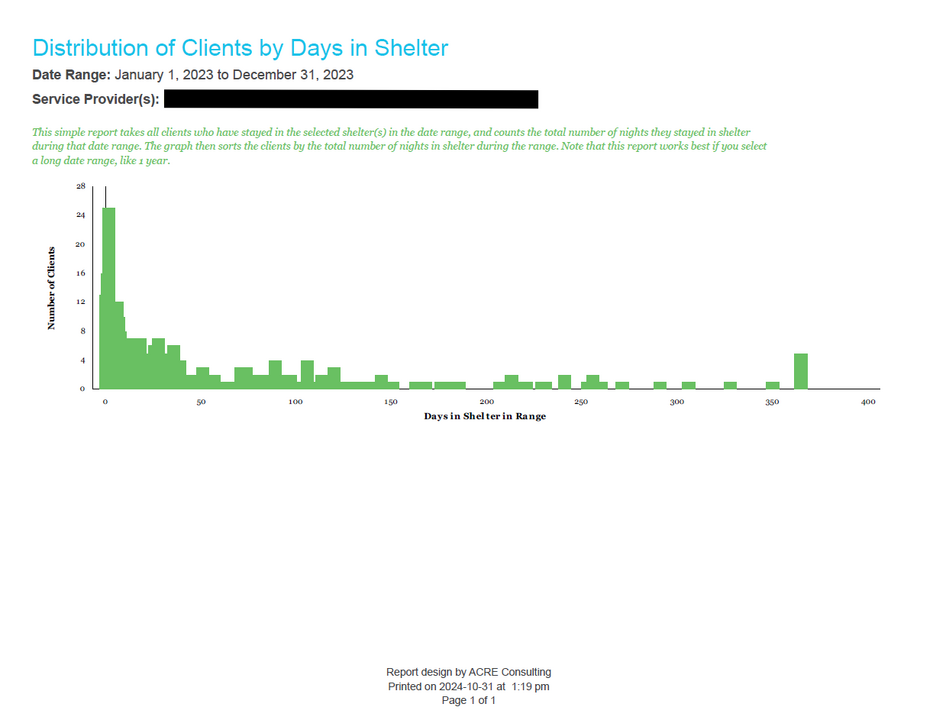
This simple report takes all clients who have stayed in the selected shelter(s) in the date range, and counts the total number of nights they stayed in shelter during that date range. The graph then sorts the clients by the total number of nights in shelter during the range. Note that this report works best if you select a long date range, like 1 year.
This report is a free tool that's a companion to my data wizardry presentation, You're Probably Lying About Homelessness, which you can watch on the webinars archive page.
This simple report takes all clients who have stayed in the selected shelter(s) in the date range, and counts the total number of nights they stayed in shelter during that date range. The graph then s…
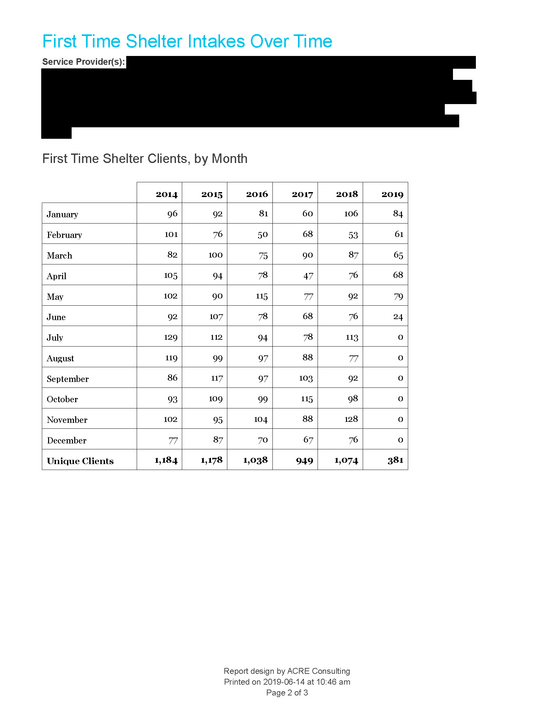
This report, commissioned by the City of Ottawa, aggregates data from the first shelter stay of clients in HIFIS 4. In other words, for each client, it looks up to see what was their first date of shelter admission, out of all the stays that have been recorded in HIFIS. Then it summarizes the total unique number of new shelter clients by month and by year, allowing you to track long-term shelter inflow data. There is no date parameters for this report; instead it automatically displays data for up to the past 5 years (if there is data going back that far).
This report, commissioned by the City of Ottawa, aggregates data from the first shelter stay of clients in HIFIS 4. In other words, for each client, it looks up to see what was their first date of she…
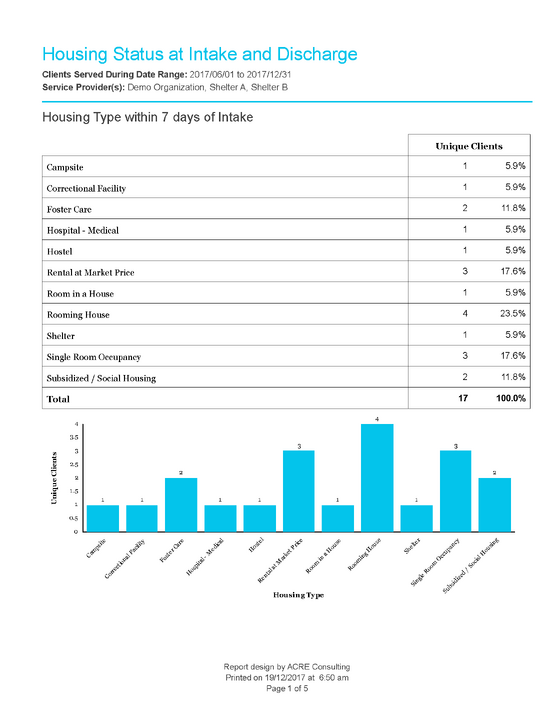
This report aggregates information for the housing of clients before and after entering shelters. It displays housing type prior to intake, reason for service, housing type after discharge, and reason for discharge.
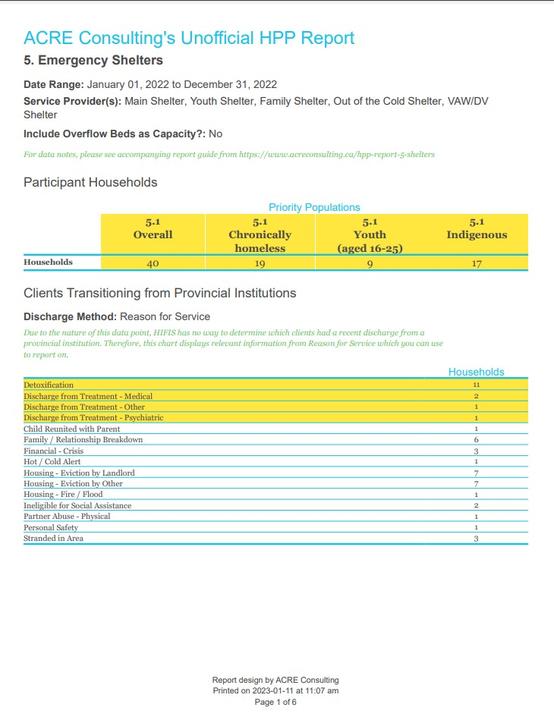
This report is intended to allow communities in Ontario who receive HPP funding to use HIFIS data to report out on the Emergency Shelters section of the HPP reporting requirements. Broadly, it reports on emergency shelter capacity and usage, broken down into priority population groups.
This is an unofficial report and is not endorsed by the Ontario MMAH.
This report is intended to allow communities in Ontario who receive HPP funding to use HIFIS data to report out on the Emergency Shelters section of the HPP reporting requirements. Broadly, it reports…
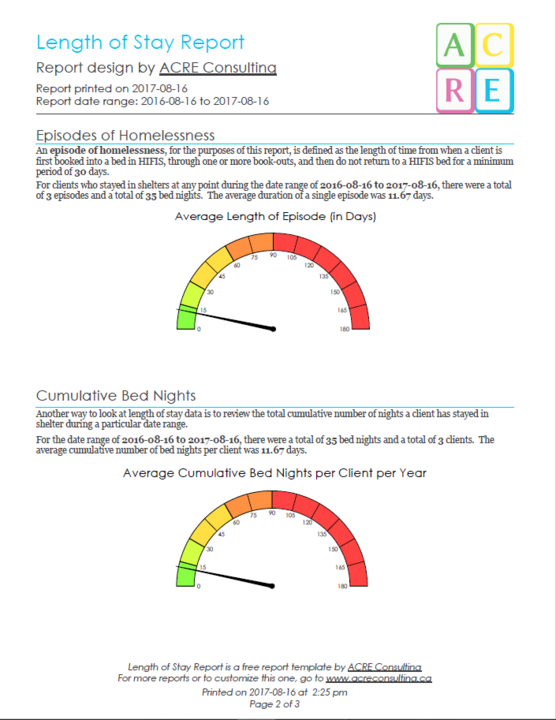

This dataset is a fixed version of vw_BedList. It's not quite a bug, but the data in vw_BedList has been collected in a way that makes it difficult to use. This cleaner dataset simply lists all the beds, and if there's a client in them, it lists the client's stay information. No mess, no fuss. We also include an updated version of the official HIFIS Bed List report that references this new view.
This dataset is a fixed version of vw_BedList. It's not quite a bug, but the data in vw_BedList has been collected in a way that makes it difficult to use. This cleaner dataset simply lists all the be…
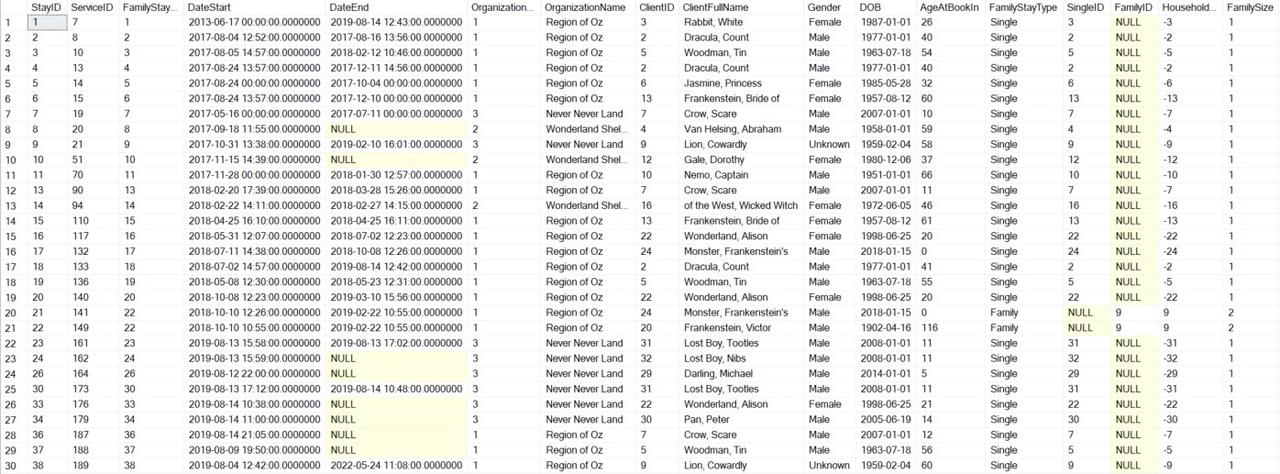
The view combines data from the Admissions module and also the Families module. The following logic is used: when the client booked in, were they in a family? And if so, did any other members of the same family book in at the same shelter at the same time? If the answer to both of these questions is a yes, then the stay is interpreted as a family stay.
The view combines data from the Admissions module and also the Families module. The following logic is used: when the client booked in, were they in a family? And if so, did any other members of the s…
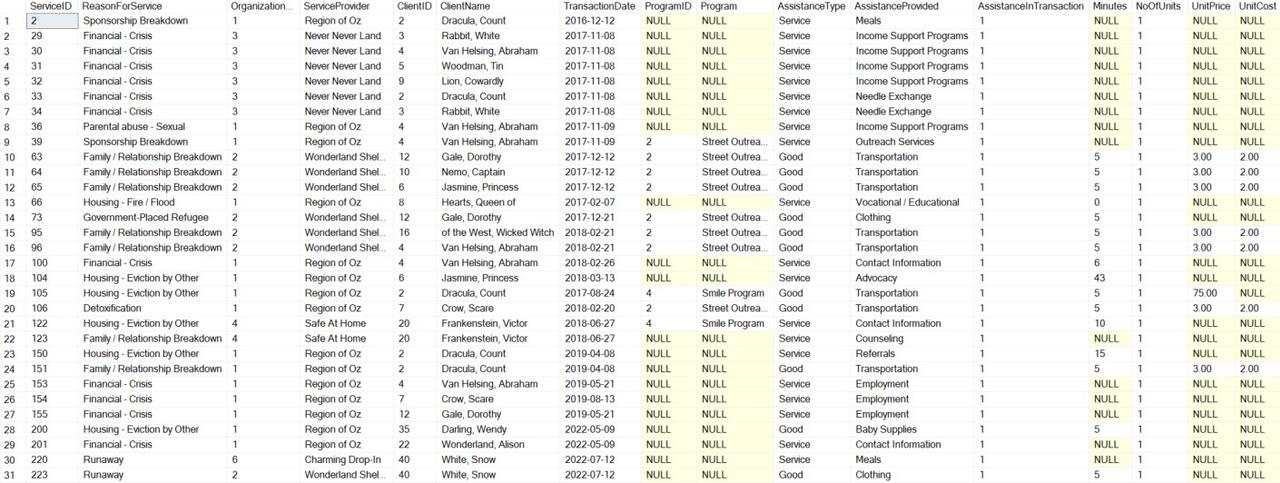
This view compiles and merges information from the Goods & Services module into one convenient dataset. It includes all the relevant information about each Goods & Services transaction, including client information, program information, and the user that entered the transaction.

This simple view compiles information from the Goods & Services module into one convenient dataset. It includes all the relevant information about each Services transaction, including client information, program information, and the user that entered the transaction.

This simple view compiles information from the Goods & Services module into one convenient dataset. It includes all the relevant information about each Goods transaction, including client information, program information, and the user that entered the transaction.

This view compiles all the relevant information about each group activity, including aggregated information about the number of attendees, but does not include information about the attendees themselves.

This view compiles relevant information about each group activity with a record for each attendee.

This simple view compiles information from the Incidents module into one convenient dataset. It includes all the relevant information about each Incident, including involved clients and staff, emergency service involvement, notes and recording staff.

This simple view compiles information from the Turnaways module into one convenient dataset. It compiles both identified and anonymous Turnaways together, making it easier to summarize. It includes all relevant information, including reasons for service and turnaway, requested by staff, and referral information.
This simple view compiles information from the Turnaways module into one convenient dataset. It compiles both identified and anonymous Turnaways together, making it easier to summarize. It includes al…
